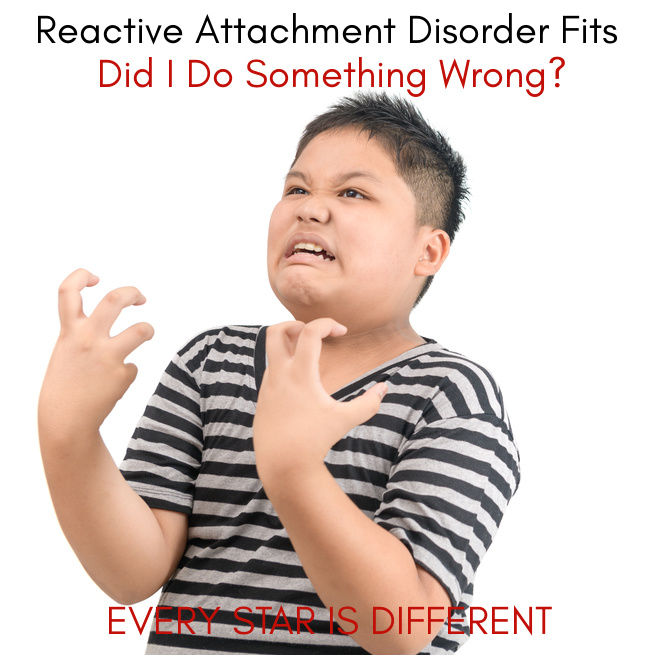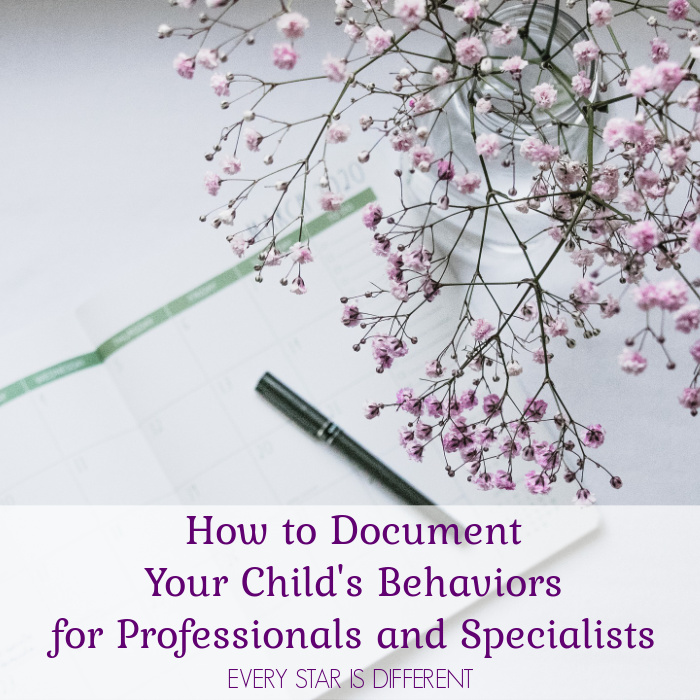Reactive Attachment Disorder or RAD and Autism Spectrum Disorder are often confused with one another as some signs and symptoms often look similar without context.
RAD fits and autism meltdowns definitely have similarities, but are incredibly different.
In our home three out of four of our children are on the autism spectrum. Our two adopted children have Reactive Attachment Disorder or RAD.
This post discusses the difference between Reactive Attachment Disorder or RAD fits and Autism meltdowns based on experiences we have had in our home.
It's our hope that understanding differences can help caregivers.
Our children have contributed to this post as they know themselves and their siblings best.
They know how to tell a RAD fit from an autism meltdown, especially in their youngest sister who has both diagnoses.
Every child is different. There will always be an exception to every point explained. If your child doesn't fit all of these points exactly, that's okay.
The Differences Between RAD Fits and Autism Meltdowns
1. Negative Feelings Towards Others vs. Self
During an autism meltdown, a child is often unaware of the people around him.
The meltdown usually has nothing to do with people and everything to do with what's going on inside of him.
He may be struggling with sensory regulation or executive functioning.
Emotions may be too big and he can't handle them.
But no matter what, he is focused on negative feelings within or about himself.
An autism meltdown often begins when the world is too much and too overwhelming.
Minimizing external stimuli is the goal.
During a Reactive Attachment Disorder or RAD fit, there is the RAD child and her target.
Behaviors have everything to do with the relationship and negative feelings towards another person.
All rage is directed towards the target, whomever that may be in the moment.
Reactive Attachment Disorder or RAD fits start when the child challenges the relationship boundaries in some way, because she is filling unsafe and cannot trust.
A caregiver can try to soothe and provide ways for sensory and emotional regulation, but that doesn't stop the RAD fit.
It still comes.
After the fit is over, the RAD child may feel negative feelings about herself, but not usually until it's over.
Please note that a child with Reactive Attachment Disorder can often feel negative feelings towards herself that can lead to dangerous situations outside of a RAD fit, but during a RAD fit, negative emotions are towards others.
2. The Intentions Behind Self-harm and the Harming of Others
An autistic child may self-harm or harm others as he seeks sensory input to help regulate.
Once an alternative method of sensory input is introduced, liked, and practiced, self-harm or harm to others most often stops.
The autistic child does not want to hurt himself or others. He is only trying to find ways to meet sensory needs.
A child with Reactive Attachment Disorder intentionally harms herself and others because she wants to.
Hurting herself or others repulses those that are close and keeps them away.
Hurting herself or others is a way to escape relationships.
Unlike an autistic child, the self-harm and harming of others doesn't stop once sensory needs are met.
3. The Initial Trigger of the Behavior
An autism meltdown is usually caused by an unexpected change in routine or schedule.
It can also be caused sensory overload or emotional dysregulation.
My boys explain the initial onset of an autism meltdown as the result of not seeing something coming and being completely thrown off by it.
Dinomite's meltdowns have tended to be more about the fear of the unknown.
Bulldozer's have been more about changes to routines and schedules that he heavily depends on.
A RAD fit is triggered by the child with Reactive Attachment Disorder feeling uncomfortable and unsafe with expressions of love shown by others.
Someone gets too close and she must push them away.
Too much love is too dangerous and sends a message to the brain to fight to get away.
It's all about survival.
4. The Response to Emotions
A child with autism feels emotions strongly. He is aware of this and wants to do whatever he can to try to regulate as safely as possible.
In this process he may try to hold in emotions and discomfort until he is in a safe place, then it all comes out at once.
Other times, due to sensory overload, he may not be able to do this, and an autism meltdown occurs in a public place.
Ultimately an autistic child wants to be able to feel emotions safely. He just needs to learn how, and that's hard sometimes.
A child with Reactive Attachment Disorder has learned through neglect and/or abuse that feeling emotions is wrong and bad.
Her original caregiver did not meet expressions of emotions with kindness and care.
At times she may have been neglected and just gave up.
Other times abuse occurred.
For these reasons, she tells herself she must not feel emotions.
A RAD child doesn't want to feel and express emotions because the brain thinks bad things will happen when she do.
Emotions can only be held in for so long, and so the child with Reactive Attachment Disorder blows, often targeting the current caregiver.
Due to the wiring of the brain, neglect and abuse from a previous caregiver is projected onto the current caregiver.
The RAD child blames the current caregiver for everything.
Until a child has healed enough to take accountability for her own actions and to train the brain to understand the difference between the past and the present, nothing changes.
5. The reason behind, "I want..."
Autism meltdowns can be a result of a child not getting what he wants, but this usually has to do with a need for sensory or emotional regulation, sometimes paired with an unexpected change in routine or schedule.
At times an autism meltdown can be caused by an inability to have access to objects related to passions.
The autism meltdown is completely predictable.
Love and comfort from a caregiver often helps the child through an autism meltdown, especially paired with the process of sensory regulation.
RAD fits are about a child not getting what she wants in the moment.
The fit can literally be about anything and is often very unpredictable.
She doesn't want to do what's asked, and that's that.
In our home we use the phrase, "She wants what she wants, when she wants it, and if she doesn't get it... Beware!"
The child with Reactive Attachment Disorder doesn't trust the caregiver's thoughts, words and actions.
It is very difficult to rely on adults, especially caregivers because of past abuse and neglect.
This leads to a battle over control. The RAD child needs to hold on to control to feel safe.
Love and comfort from a caregiver often escalates the situation. It's too much in the moment and only triggers the fight or flight response more.
The child often thinks if a caregiver does what she wants, the caregiver loves her, but if the caregiver doesn't do what she wants, the caregiver hates her.
Relationship boundaries are always being tested, and very black and white for the RAD child until healing occurs.
6. The Consistency of the Struggle
An autistic child is going to struggle with the same types of situations again and again.
A caregiver learns to predict triggers and prepare for them.
Triggers are consistent and rarely change, though the child's ability to handle the same situations can change over time, getting better and better.
New triggers may be introduced over time. Others may disappear over time, but ultimately, the caregiver knows what to expect.
Behaviors during the struggle will also be the same, very consistent to each child's meltdown tendencies.
There is a constant push and pull initiated by the RAD child when it comes to struggles with caregivers.
A caregiver may not be able to predict triggers and prepare for them because triggers change regularly and are inconsistent.
RAD fits can be about anything, any time of day, any day of the week. One day everything is perfect, the next it feels like war has broken out.
If there is a consistent topic where a RAD child struggles, the boundary will most often change each and every time.
When it comes to the struggle during the RAD fit, behaviors are unpredictable.
When one behavior doesn't bring the desired response from a caregiver, a child with Reactive Attachment Disorder will try something else, usually something more dangerous.
7. The Caregiver's Involvement
Often times when a caregiver or other trusted adult helps an autistic child regulate, soothe and calm down during a meltdown, the help is welcomed.
The child regulates with the help of an adult because he trusts the adult to help him.
A trusted caregiver can provide sensory items and/or experiences to help regulate and eventually help the child be at his best.
When a caregiver tries to help a child with Reactive Attachment Disorder during a fit, the caregiver is very unwelcome and may experience physical, verbal, and emotional abuse.
Acts of love and care can increase behaviors. They are considered dangerous by the RAD child.
Sensory items and/or experiences won't help regulate.
Most often items turn into weapons.
Safety for everyone is the priority.
8. The Explanation
When a child with autism is able to gather his thoughts and express feelings about what actually was going on that caused the meltdown, you will almost always hear the truth.
Instances where you don't hear the truth are often due to a lack of ability to communicate events and emotions effectively.
Autism and honesty go hand in hand.
When a child with Reactive Attachment Disorder calms down after a fit, it is rare to receive an honest answer as to why the fit happened in the first place.
Feelings are dangerous. The truth is dangerous.
The lack of honesty makes it more complicated to find a way to help the next time around. The cycle repeats itself over and over again.
Conclusion
It's extremely important that a child receives the proper supports that match their diagnosis.
Autism supports do not often help a child with Reactive Attachment Disorder. In some cases they can make matters so much worse.
Treatment for Reactive Attachment Disorder does not help a child on the autism spectrum disorder.
In the midst of the most difficult aspects of Reactive Attachment Disorder and Autism Spectrum Disorder, it's so extremely important to understand what will help and what will make matters worse for everyone involved.
It's also important to understand that in no situation is a child purposely lashing out. RAD fits and autism meltdowns are a result of how parts of the brain are working at any given time.
If you have concerns about autism, based on genetic and developmental history or Reactive Attachment Disorder or RAD, based on trauma in utero and during the first eighteen months of life, find a qualified psychologist or developmental pediatrician to diagnose and help.
Knowing how to respond appropriately when your child is in distress can really make difference.
And in a situation where you can't pin point one or the other, know that there can be any number of reasons your child is acting the way he is. It's not just a choice of autism or Reactive Attachment Disorder.











.jpg)
No comments:
Post a Comment